'Big data' more accurately models how people adapt to snowstorms and other disruptions
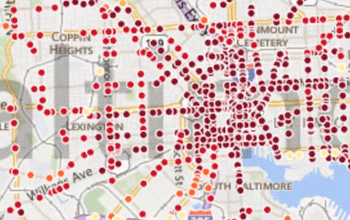
For Paul Torrens, wintry weather is less about sledding and more about testing out models of human behavior.
Torrens, a geographer at the University of Maryland, studies how snow and icy conditions affect human decisions about transportation. He also studies how these decisions ripple through other infrastructure systems.
"After moving to the Washington, D.C., area from Arizona," Torrens said, "I saw firsthand how snow upsets even careful plans for getting kids to school and commuting to work."
Common disruptions such as those associated with snow, while not always catastrophic, have real economic costs, and the costs add up.
"Critical infrastructure systems are the lifelines of society," said Dennis Wenger, program director in NSF's Engineering Directorate. "They are complex, highly interdependent processes and systems and are subject to disruption through their normal life cycle and as a result of the impact of natural and technological hazards."
Transient decisions
Conventional transportation models have traditionally relied on coarse data about land use, socioeconomics and demographics (typically pulled from periodic surveys, such as the decadal census). Then these data are used to estimate the number of trips, trip origins and destinations and choice of transportation mode and route.
Building a more detailed and dynamic picture of people's travel behavior is a long-standing goal, because assumptions about transportation choices cannot reliably be applied universally.
In real life, transportation is affected by moment-to-moment decisions by people, explained Torrens, who may adjust their transportation routines depending on their individual circumstances and activities.
During winter weather, for example, they may telework, leave earlier, leave later or change how they get to their destination. Their decisions are affected not only by their transportation options, but by their employers' policies, school schedules, Internet access and the channels by which they acquire information, as well as weather forecasts.
Torrens' goal is to understand and predict how an everyday disruption like snowfall can change people's routines and in turn impact interrelated infrastructure. His model designs focus on the links between human behavior and transportation systems, geography, communications and weather as interdependent systems with complex interactions.
Understanding the links between these variables will allow researchers to investigate risks and resiliency in different scenarios.
Ultimately, the tools from this work could help city and regional planners better prepare for and accommodate snowfall and other perturbations. They also could help government agencies better communicate with people who may be impacted.

Agents of change
To better account for the individuality of people, Torrens uses a technique called agent-based modeling, which allows the individuals or "agents" in a simulation to act independently and interact with one another. The agents' programmed behaviors are based on theory and data from a variety of sources.
Together, the agents represent synthetic populations and communities as they move and interact across urban infrastructure, and can provide insights into the behaviors of different groups.
Relying on big data from social media sources, Torrens is building a dynamic, near-real-time atlas and census of a population from which motifs of human and infrastructure behavior can be extracted as rules for agents' behavior.
"Social media data is a treasure trove for information scientists, because not only do we have the message content, but the content is stamped with a location and a time," Torrens said. "We can study how information propagates throughout social networks and correlate that with physical situations as they unfold."
Vanessa Frias-Martinez, a University of Maryland computer scientist and co-investigator on the project, creates techniques to sift through social media data to pull reliable and relevant information. She then collates what are often crumbs of information into meaningful patterns of underlying behavior.
"By carefully analyzing sets of big data, we can build realistic motifs of neighborhoods and behaviors, while also protecting the privacy of the individual pieces of data that contributed to those motifs," Frias-Martinez said. "Moreover, we can do this in near-real time for whole cities, essentially filling in the gaps that traditional data sources leave behind."
When snowstorms and other behavior-changing events happen in the physical world, online interactions change, too. During a snowfall on the morning of Jan. 6, 2015, Washington-area residents tweeted about traffic conditions (for example, #Alexandria residents – Van Dorn Street is awful @WTOPtraffic #vatraffic #snow #ice #dctraffic).
One school system tried to open on time despite the slick conditions. Soon local Twitter users began posting photographs of snow-covered streets, car crashes and links to television news reports with the quickly viral hash-tag #closeFCPS. Information about the resulting problems seemed to spread, bottom-up, via a viral tag, rather than via official school channels.
With a combination of machine learning and data-mining techniques, Frias-Martinez identifies and extracts such changes from social media interactions and builds aggregated behavioral motifs. Her findings may help transportation authorities understand the variety of human reactions to snowstorms and other disruptions.
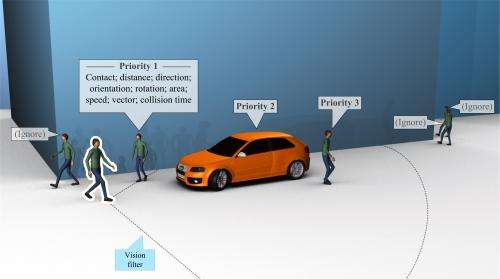
Ready, shake, go
Torrens' interest in individual responses and the new patterns they form extends to other scenarios, too. He used a similar agent-based approach when studying evacuations following earthquakes.
His model simulated the behavior of 100,000 virtual pedestrians as they responded to their changing city and interacted with other individuals.
This time, rather than data-mining for information about human decisions, Torrens focused on capturing rich details of human behavior in his models. He developed them based on years of observational work and analysis of real-world movement and behavior across a wide variety of urban settings and situations.
The details of virtual people are programmed down to how they look at their surroundings, how they walk and how they interact along streetscapes and in crowds using motion-capture data recorded from real participants.
With agent-based modeling, Torrens is able to scale to massive populations and to drop them into physically realistic synthetic cities for a variety of what-if scenarios. Researchers and city planners can study the various effects of building damage, the feasibility of evacuation routes, and secondary hazards as one disruption causes another.
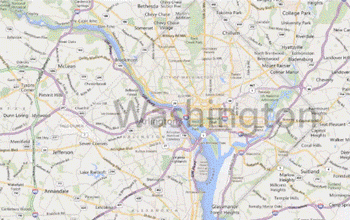
From the virtual world to the physical one
Roger Ghanem, a University of Southern California engineer and a co-investigator of Torrens and Frias-Martinez, is translating the behavioral motifs from the transportation study into metrics that can be used to improve resilience in infrastructure systems.
Improvements in the ability of infrastructure—and the people who use it—to respond to and bounce back from disturbances translate into improvements in people's daily lives.
"The interaction between humans and infrastructure components is critical to community and societal resilience following disruptions," said Wenger. "As the work of this team indicates, increased knowledge regarding human interaction and the utilization of infrastructure components can be extremely valuable to infrastructure managers and emergency officials in responding to both normal disruption and extreme events."
-
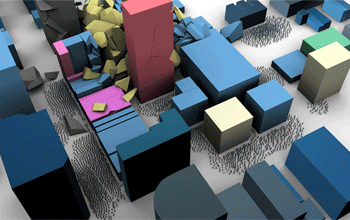
Together, agents represent synthetic populations and communities as they move and interact across urban infrastructure, and can provide insights into the behaviors of different groups. Credit: Paul M. Torrens, Geography and UMIACS, University of Maryland, College Park -
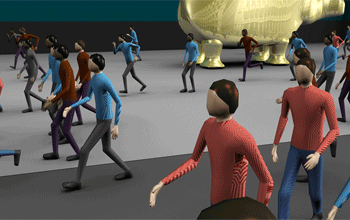
Computational agents walk (or run, depending on the scenario) through a synthetic urban area, acquiring information as they move, using that information to reason about actions, reactions and interactions. Credit: Paul M. Torrens, University of Maryland, College Park
Provided by National Science Foundation





















